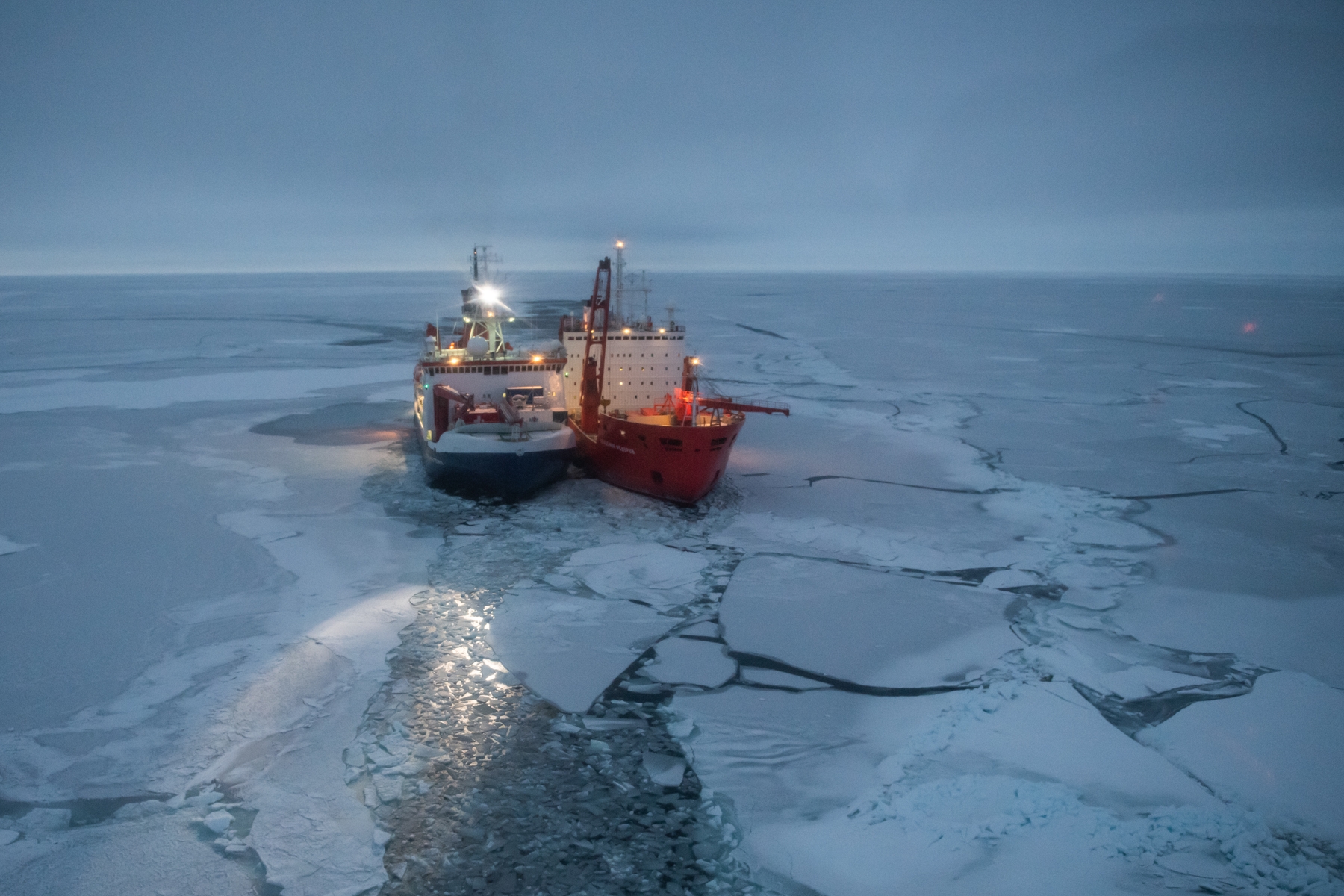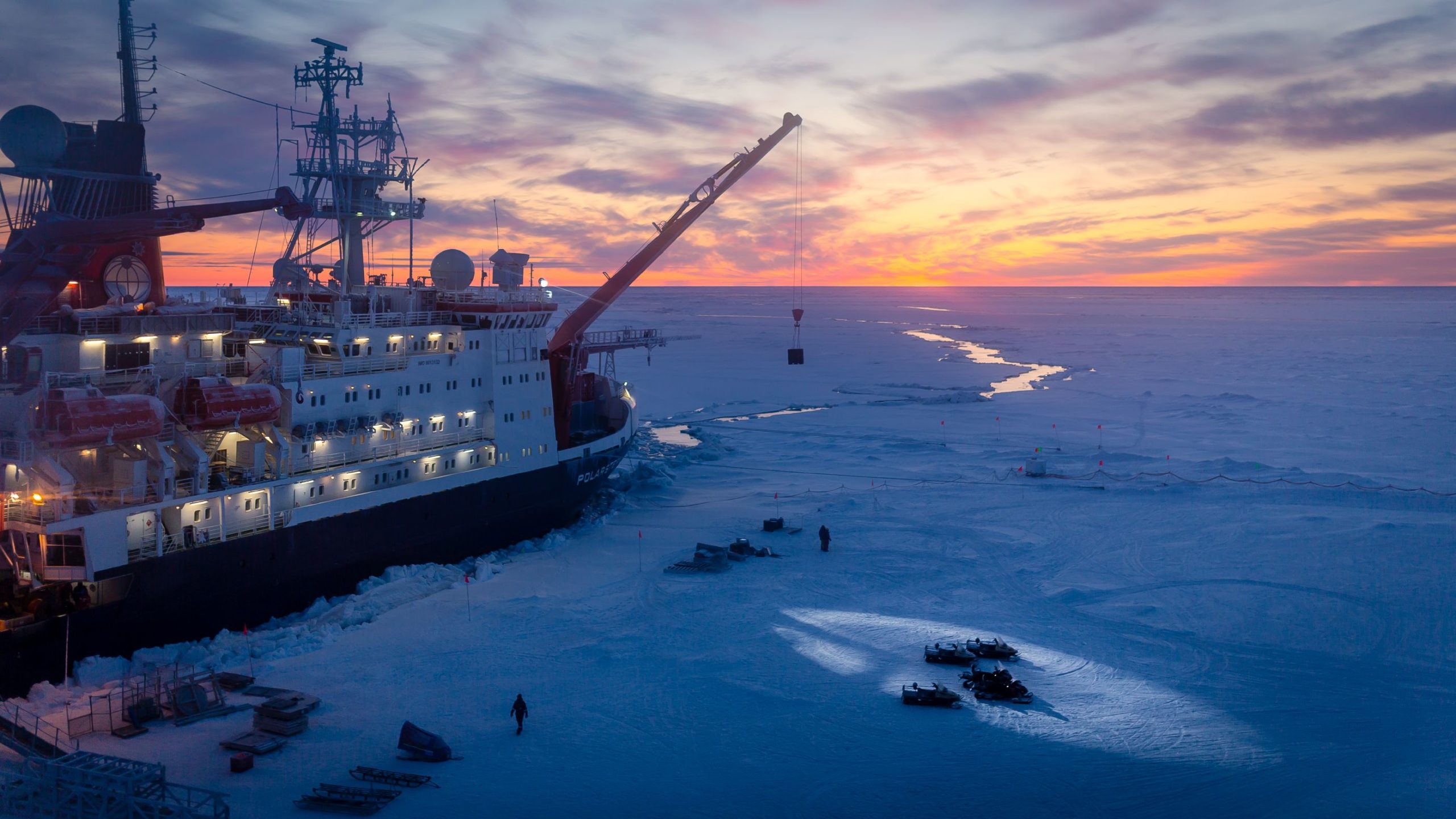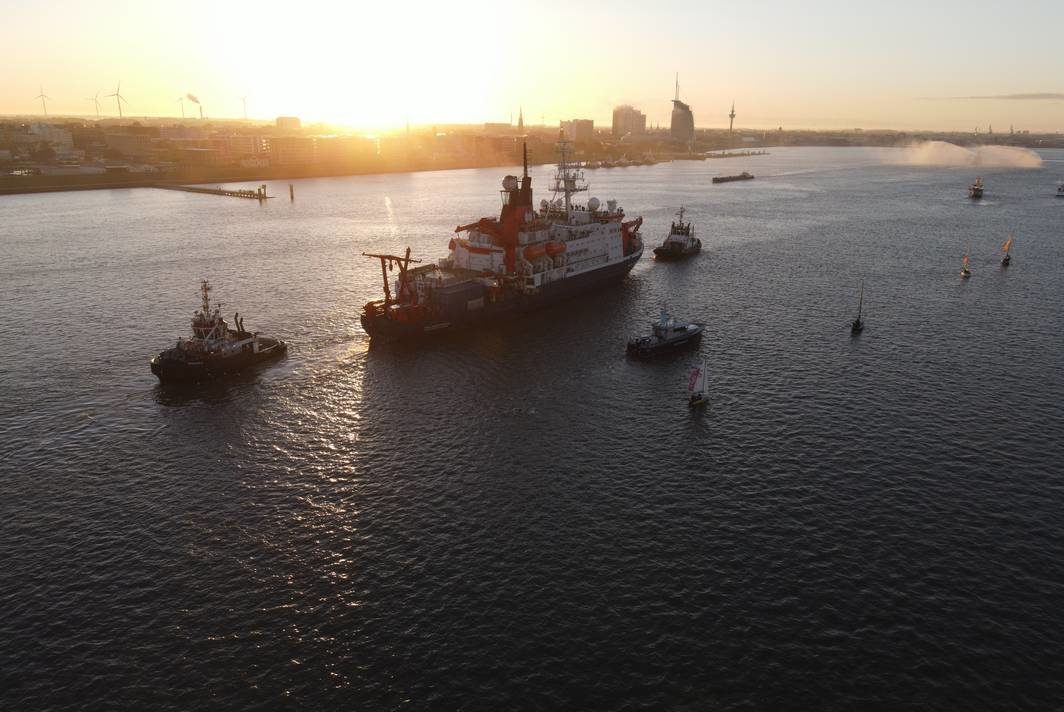MOSAiC follows the same idea Fridtjof Nansen had 127 years ago: letting nature itself be the navigator to cross the North Pole. Nature alone will dictate the research vessel Po- larstern’s course, allowing a total of several hundred researchers on board during different phases of the expedition to experience the Arctic winter close up. Arctic sea ice mainly forms off the coast of Siberia – the region considered by some as the birthplace of the Arctic ice masses. From there, the ice drifts slowly across the Central Arctic, and, after a year, is carried southwards via the Fram Strait east of Greenland to the Atlantic, where it eventually melts. This phenomenon is known as Transpolar Drift. However, not all Siberian ice heads directly toward the Fram Strait; some of it takes a route north of Canada and Alaska and becomes trapped in the so-called Beaufort Gyre, where it may remain for several years. During this time, the ice develops into enormous ice floes. In September 2019, when the sea ice is at its thinnest, the “Polarstern” set sail to the Siberian coast to become locked in the ice. To this end, the ship has been moored to an older ice floe that is thick enough and several kilometres wide, offering enough space for an aircraft landing strip as well as the central research camp. The Polarstern's yearlong drift through the Arctic Ocean has begun.
Polarstern left Tromso on 20 September 2019 and headed to 85° N, 135° E where, after a few days of searching by Polarstern and the support vessel Akademik Fedorov, the MOSAiC team found a suitable ice floe (at 85° N, 137° E).

In a race against the approaching darkness of the polar night, the research and measuring stations were set up and deployed before 9 October. Around Polarstern, the so-called Ice Camp was set up on the ice floe, including a sophisticated infrastructure and the various "city parts" of the science teams. Meanwhile, the international team on Akademik Fedorov deployed the complex network of buoys and measuring stations up to 40 km away - called the Distributed Network. This network will also drift around the central observatory Polarstern. At the end of October, Akademik Fedorov left Polarstern - and the isolated drift of Polarstern began.

On 13th December, the first support vessel reached Polarstern: the Russian icebreaker Kapitan Dranitsyn. Not only did this ship bring fuel and supplies to Polarstern, but also the next science team and the crew that will now cover the second leg of the MOSAiC expedition – the leg entirely taking place in the polar night.

This exchange of personnel and cargo took place under the most challenging ice conditions. For days, fast sea ice had slowed the progress of the resupply icebreaker Kapitan Dranitsyn; bound for the North Pole, her mission was to support the second exchange of researchers and crew in the MOSAiC expedition. Nevertheless, she steadily drew closer to her destination, and finally, at 12:20 pm (CET) on Friday, 28 February, dropped anchor 970 metres from Polarstern, moored to the same floe. While the handover is in full swing on the MOSAiC floe, in Russia another icebreaker left port in order to supply Kapitan Dranitsyn with additional fuel on her return trip.

After successfully completing the first half of its more-than-a-year-long drift through the Arctic Ocean, the MOSAiC expedition suddenly faced unforeseen challenges, posed by the coronavirus pandemic. The massive restrictions on global travel hindered the third team exchange, which had been planned as an aerial transfer in early April, using the Spitsbergen archipelago (which Norwegian authorities have since placed off limits due to the pandemic) as a base of operations. Since the current situation also means the international icebreakers that were originally meant to resupply the expedition are also prohibited from making any staff transfers, in the span of just a few weeks the Alfred Wegener Institute, Helmholtz Centre for Polar and Marine Research (AWI), the MOSAiC Coordination Office and the funding bodies and operators of the German Research Fleet Coordination Centre at Hamburg University developed a completely new alternative plan: The upcoming transfer will be completed out with the aid of the German research vessels RV Sonne and RV Maria S. Merian. The new team will start in May.

Thanks to the support of the German research vessels RV Sonne and RV Maria S. Merian, the MOSAiC expedition continues, despite the coronavirus pandemic. Polarstern met the two vessels in calm waters off Svalbard, in order to carry out a complete personnel transfer (ca. 100 people), and an exchange of cargo and provisions. Then Polarstern and her new team returned to the ice and continued their expedition in the Arctic Ocean.

With the support of the Russian research icebreaker Akademik Tryoshnikov, the last big refueling and personnel rotation was carried out before the start of the last leg of the expedition. Once again, the supply vessel brought the next scientific team and a new crew to the Polarstern - as well as food, equipment and fuel. The Akademik Tryoshnikov with leg 5 participants arrived near Polarstern on 9 August 2020. The morning of 11 August was the time for their docking manoeuver: Polarstern approached Akademik Tryoshnikov carefully and positioned her bow next to the stern of the Russian research icebreaker to start bunkering and to start scientific and ship related handovers. On 13 August, Polarstern started steaming towards the Central Arctic to study the onset and early freezing phase of the sea ice - the last process until the whole annual cycle is covered.

After more than a year in the Central Arctic, on Monday, 12 October, the research icebreaker Polarstern returned to her homeport in Bremerhaven. Accompanied by a ‘welcome committee’ of ships that came to greet, the ship entered the North Lock with the morning high tide, at ca. 9:00 am CEST. At port, Expedition Leader Markus Rex, Captain Thomas Wunderlich and the entire team from the final leg of the expedition were welcomed by e.g. Federal Minister of Education and Research Anja Karliczek and the Director of the Alfred Wegener Institute, Antje Boetius.
